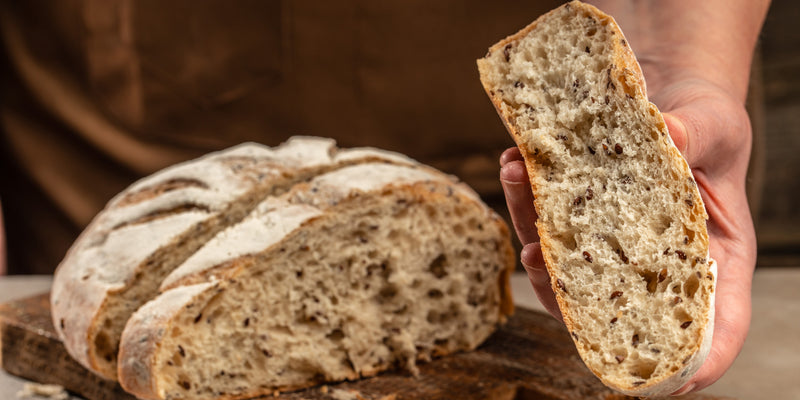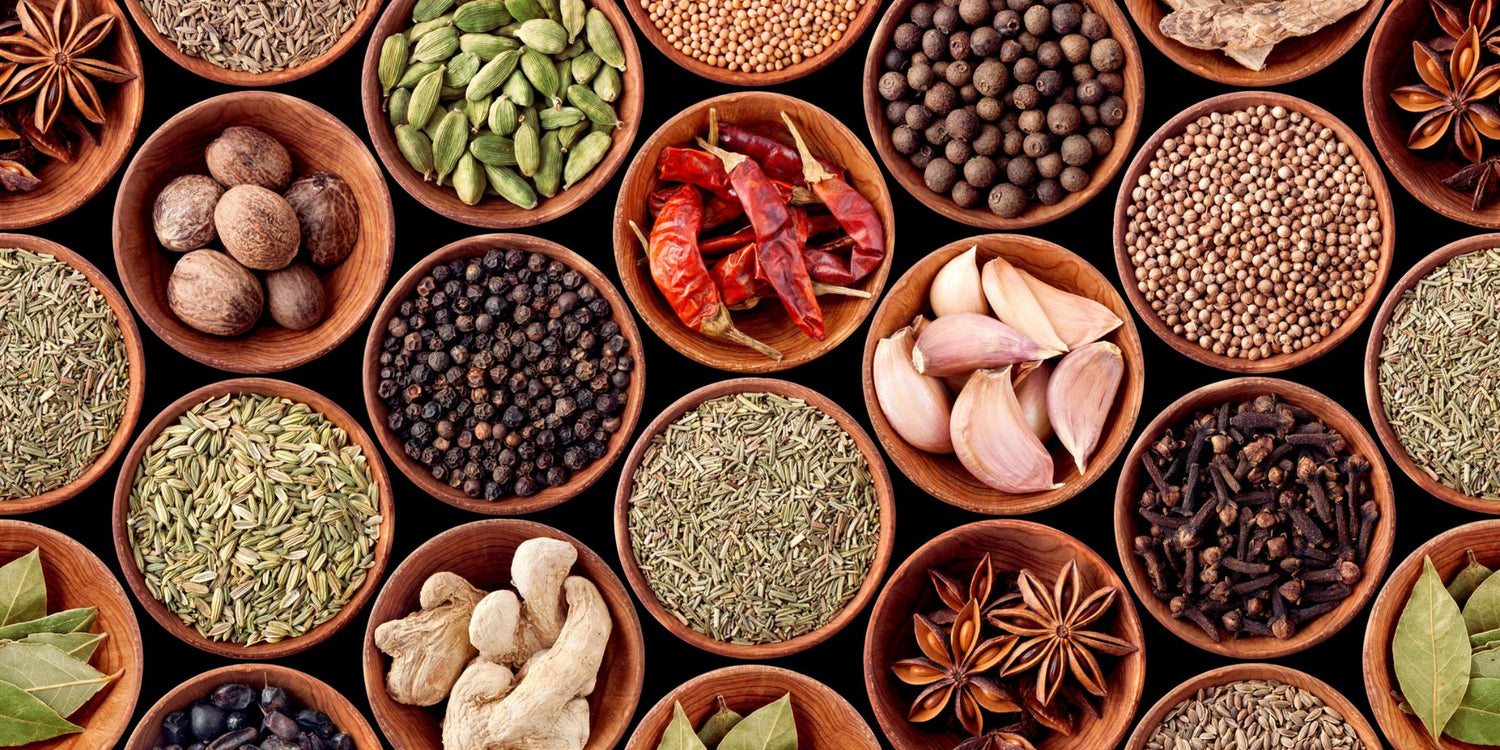Have you mastered the art of seasoning your dishes with salt and pepper, but find yourself craving more complex and nuanced flavors? Perhaps you went to a restaurant, tasted an amazing dish, and wanted to try and replicate its taste? Well, it's time to take your cooking to the next level by learning advanced techniques for layering flavors.
While seasoning the basics is an important foundation, truly memorable dishes often feature a symphony of complementary and contrasting tastes. By thoughtfully combining various ingredients, cooking methods, and flavor profiles, you can create amazing dishes that will impress your family and friends.
So, here are five strategies for building flavor in your cooking, from sautéing aromatic vegetables to adding herbs and spices early in the cooking process. With a little practice, you'll be crafting meals that will leave everyone asking, "How did you do that?"
What is Flavor Layering?

Flavor layering is a culinary technique that aims to create complex and harmonious flavors in a dish by combining and balancing different tastes, aromas, and textures. By adding multiple layers of flavors to a recipe, chefs and home cooks can elevate the taste profile of a dish, turning a simple meal into a culinary masterpiece. Through the careful and deliberate combination of ingredients and cooking techniques, flavor layering allows for a multi-dimensional experience for the taste buds, resulting in a more enjoyable and sophisticated dining experience.
Why Is It Important to Layer Flavors in Cooking?
Flavor layering is a fundamental technique in cooking that involves building multiple layers of flavors to create a harmonious and well-balanced dish. It is important because it has a significant impact on enhancing dishes and taking them to the next level.
When flavors are layered properly, each ingredient adds a distinct taste that complements others, resulting in a more complex and satisfying dish. The combination of different flavors working together creates a depth that would be missing otherwise. For example, adding herbs and spices at different stages of cooking can release and develop their flavors more effectively, enriching the overall taste profile of the dish.
Flavor layering also allows for the creation of a fully realized dish. By carefully selecting and layering flavors, a dish can go from being one-note to becoming a culinary masterpiece. It transforms a basic recipe into something extraordinary. For instance, adding a splash of acidity from citrus juice or vinegar towards the end of cooking can brighten up the flavors and bring out the best in other ingredients.
How Important is Salt in Flavor Development?

Salt is an essential ingredient in flavor development, as it plays a crucial role in enhancing the overall taste of food. It can add depth, balance, and complexity to various dishes, making them more enjoyable and satisfying.
One of the main ways salt enhances flavor is by altering our perception of taste. When added in the right amount, it can make food taste more appealing and flavorful. It has the ability to enhance the perception of sweetness, making desserts and other sweet dishes taste even better. Additionally, salt can also reduce the perception of bitterness in certain foods, which can make them more palatable.
The mechanism by which salt interacts with taste receptors is quite complex. Salt works by binding to specific taste receptors on the tongue, activating them and stimulating the sensation of saltiness. This interaction also has the effect of suppressing the perception of bitter tastes, thereby making the overall flavor of the food more balanced and enjoyable.
5 Tips on How to Layer Flavors

When it comes to creating delicious and flavorful dishes, knowing how to layer flavors is key. Here are five tips to help you master this technique, incorporating facts from the background information:
- Sauté aromatic vegetables: Aromatics like onions, garlic, and celery are the building blocks of flavor in many cuisines. Sautéing these vegetables in oil or butter before adding other ingredients helps release their natural flavors, adding depth to your dish. This technique is commonly used in cuisines such as French, Italian, and Asian.
- Season early with herbs and spices: Adding herbs and spices early in the cooking process allows their flavors to develop and intermingle with other ingredients. This helps create a well-rounded and complex flavor profile. Herbs such as thyme, rosemary, and basil and spices like cumin, paprika, and turmeric can elevate your dishes to new heights.
- Consider cuisine profile: Different cuisines have distinct flavor profiles. Understanding the flavors and ingredients commonly used in a particular cuisine can help you layer flavors effectively. For example, Indian cuisine often incorporates a blend of spices called garam masala, while Mexican cuisine utilizes chili peppers and cumin for a bold and spicy taste.
- Use proper equipment: The right equipment can enhance flavor layering. The Background Information suggests utilizing a pressure cooker, which can expedite the cooking process while infusing flavors into ingredients. This method is particularly effective for dishes like stews and braises.
- Utilize a pressure cooker: A pressure cooker is a great tool for flavor layering and creating rich and intense flavors in a short amount of time. The high pressure and steam inside the cooker help ingredients fully absorb the flavors of herbs, spices, and other seasonings, resulting in a more flavorful dish.
Does the Order of Flavor Layers Matter?

The order in which flavor layers are added to a dish is of utmost importance as it greatly impacts the overall taste and enjoyment of the meal. When flavors are thoughtfully layered, they can harmonize, intensify, and complement each other, resulting in a well-balanced dish.
Considerations of specific flavors and seasonings play a crucial role in achieving the desired outcome. The timing and sequence of adding these ingredients can significantly affect the taste. For instance, adding salt early in the cooking process may cause the flavors to become diluted, while adding it towards the end can enhance and bring out the existing flavors. Similarly, heat-sensitive ingredients such as herbs should be added closer to the end to preserve their delicate flavors.
Cooking time also influences the order of flavor layers. Ingredients with longer cooking time, like root vegetables, can be added first to develop their flavors fully, followed by more delicate ingredients like fresh herbs or seafood.
Takeaway
Learning the art of flavor layering is an essential skill for any home cook or chef who wants to create truly outstanding and memorable dishes. By thoughtfully combining various ingredients, cooking methods, and flavor profiles, you can craft meals that showcase a symphony of complementary and contrasting tastes.
The key is to approach flavor layering strategically. Start by sautéing aromatic vegetables to build a solid flavor foundation. Then, judiciously add herbs and spices at different stages of the cooking process to maximize their impact. Pay attention to the flavor profiles common in the cuisine you're working with and utilize equipment like pressure cookers that can help infuse ingredients with deep, intense flavors.
Ultimately, the order in which you layer flavors is critical. Timing the addition of salty, acidic, sweet, and savory elements can mean the difference between a one-note dish and a culinary masterpiece. With practice, you'll develop an intuitive understanding of how to balance and harmonize these different flavor components.
By mastering the art of flavor layering, you'll be able to transform simple recipes into culinary works of art that will leave your family and friends awestruck. So don't be afraid to experiment and push the boundaries of your cooking. The rewards of flavor-layered dishes are well worth the effort.
Renpho Health Tips
-

Spinning for Two: What Expecting Moms Need to Know About Indoor Workouts
May 28, 2024
Read more >
-

Meal Plan for Muscular, Metabolic Legs: Nutrition Tips for Leg Day
May 22, 2024
Read more >
-

Reach Your Nutrition Goals with These Powerhouse Nutrient Dense Picks
May 21, 2024
Read more >
-

Gamify Your Gym Time: Strategies to Make Your Workouts More Engaging and Fun
May 17, 2024
Read more >
-

Low Carb Alternatives for Weight Loss: Shedding Pounds Deliciously
May 15, 2024
Read more >
